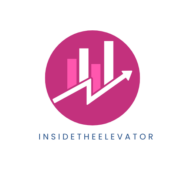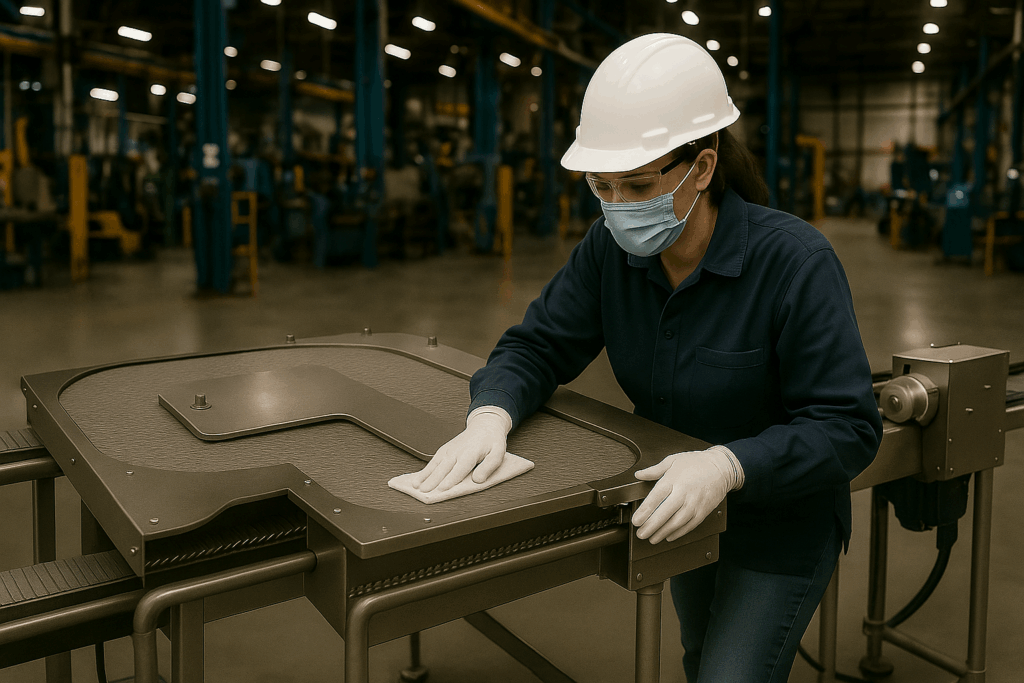Maintaining strict sanitation protocols ensures product safety and regulatory compliance for pharmaceutical manufacturers. But what’s the proper way to sanitize pharmaceutical-grade accumulation tables and other production line accumulators?
The proper method is to first clean with an FDA-approved detergent, then sanitize with a 70% isopropyl alcohol solution, allowing 10-15 minutes of contact time, then wiping with sterile wipes in a unidirectional pattern.
While this basic process is correct, there are several critical factors that can affect the effectiveness of sanitization, including the specific material of your accumulation table, the types of products being manufactured, and your facility’s cleanliness classification. Understanding these variables will help ensure you follow the most appropriate sanitization protocol for your situation.
How Material Type Affects Sanitization Protocol
Stainless steel accumulation tables require different sanitization approaches than those made from plastic or composite materials. More potent cleaning agents can be used for stainless steel without risk of material degradation. However, if exposed to harsh chemicals, plastic surfaces may become damaged or compromised, potentially creating microscopic crevices where bacteria can grow.
For plastic accumulation tables, it’s essential to use gentler, specifically approved cleaning agents and to inspect the surface for signs of wear or damage regularly. Composite materials often fall somewhere in between, but generally require manufacturer-specific cleaning guidelines.
What Impact Does Product Type Have On Sanitization Requirements?
The type of pharmaceutical product being manufactured directly influences the sanitization protocol needed. For example, sterile injectable products require the most stringent sanitization procedures, often including sporicidal agents and more frequent cleaning cycles. Non-sterile solid dose products, while still requiring thorough sanitization, may not need such aggressive protocols.
Additionally, products containing highly potent active pharmaceutical ingredients (HPAPIs) require specialized decontamination procedures to ensure no cross-contamination occurs. In these cases, specific cleaning validation studies must be performed to prove the effectiveness of the sanitization process.
How To Maintain Sanitization Standards In Different Cleanroom Classifications
The cleanliness classification of your facility determines the frequency and intensity of sanitization required. ISO 5 (Class 100) environments require more frequent sanitization, typically multiple times per shift, with extensive documentation and environmental monitoring. Lower classification areas might require less frequent sanitization, but still need consistent adherence to cleaning protocols.
Monitoring programs should include regular surface sampling and particle counts to verify the effectiveness of your sanitization procedures. Proper gowning procedures and air handling systems are also important to ensure your sanitization efforts aren’t compromised by external contamination sources.
Common Mistakes To Avoid When Sanitizing Accumulation Tables
One frequent error is not allowing sufficient contact time for sanitizing agents to work effectively. Simply spraying and immediately wiping defeats the purpose of sanitization, as most agents require 10-15 minutes of sustained contact to achieve proper microbial reduction. Another common mistake is using the wrong wiping technique, such as circular motions that can redistribute contaminants rather than remove them.
Personnel often overlook the importance of proper documentation and monitoring of sanitization procedures. Each cleaning event should be recorded with details including the cleaning agents used, contact time, and the operator who performed the task. This documentation is crucial for regulatory compliance and helps identify any gaps in the sanitization process.
What Documentation Is Required For Sanitization Procedures?
A robust documentation system must include standard operating procedures (SOPs) detailing every sanitization step. These SOPs should specify the approved cleaning agents, required personal protective equipment (PPE), step-by-step instructions, and acceptance criteria for cleanliness verification.
Cleaning logs must be maintained to record each sanitization event, including date, time, operator information, and any deviations from standard procedures. Additionally, validation reports should document the effectiveness of the cleaning process through surface sampling results and microbial testing data. These records are essential during regulatory inspections and help demonstrate consistent compliance with GMP requirements.
Regular review of sanitization records can also help identify trends or potential issues before they become significant problems. For instance, if surface testing consistently shows higher bacterial counts in certain areas, this might indicate a need to adjust the cleaning protocol or investigate potential contamination sources.
Conclusion
Given the complexity of pharmaceutical grade sanitization requirements, the most important action you can take is to review your current sanitization SOPs against the material-specific requirements of your accumulation tables. Schedule a meeting with your quality assurance team to ensure your procedures align with both manufacturer recommendations and regulatory requirements, making any necessary updates to documentation and training materials.

